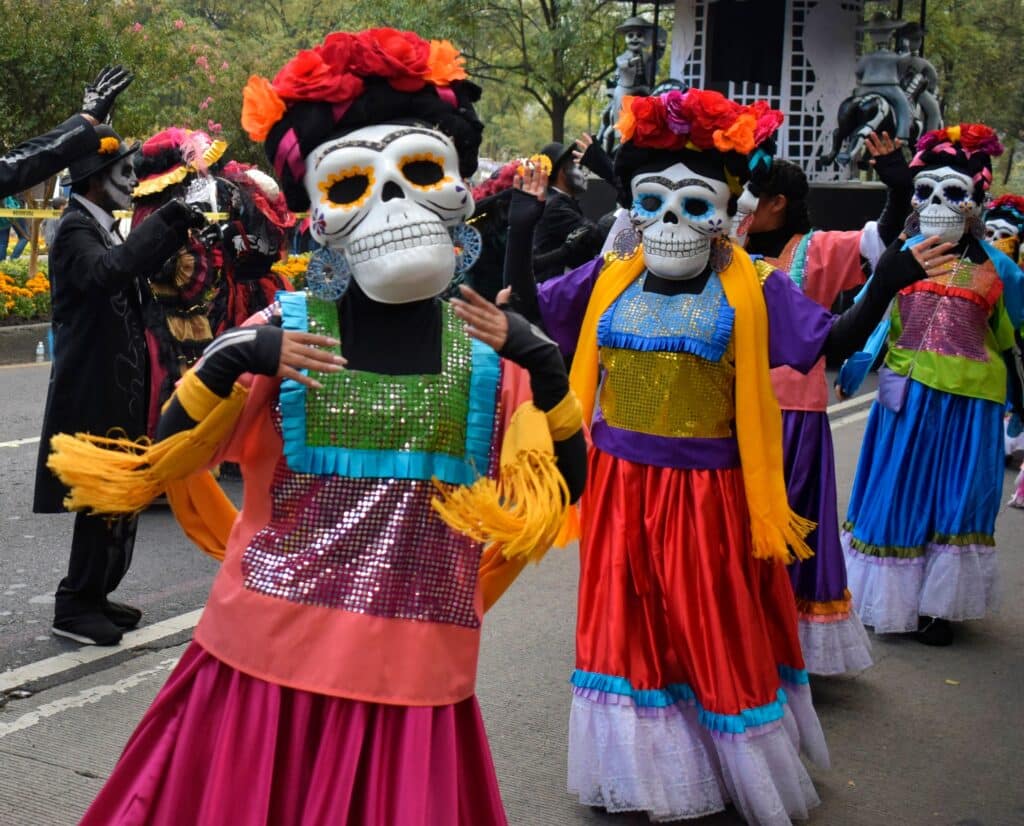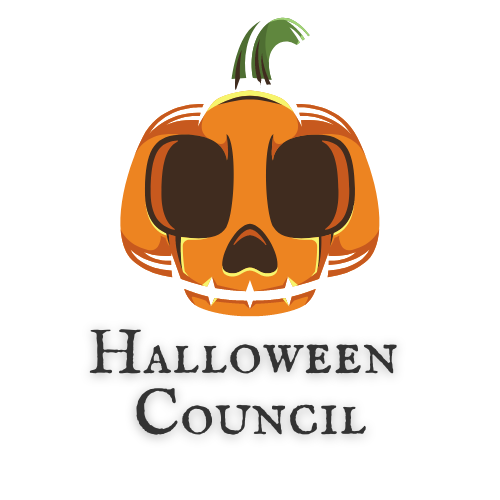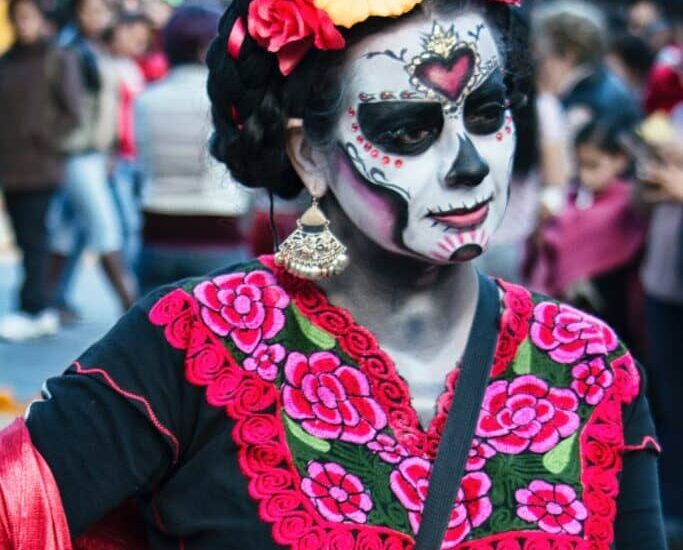I was stocking up on candy corn last October when I saw it. Right there, next to the plastic pumpkins, was a display of stunning, hand-painted sugar skulls. Their vibrant colors and intricate designs stood in stark contrast to the typical spooky fare. It hit me then how much my own neighborhood’s Halloween vibe has shifted over the years. It is no longer just about ghosts and goblins; it is about something deeper, something beautiful that has woven its way north from Mexico. This is not just a trend; it is a meaningful cultural conversation happening on our front porches. The growing Mexican influence on Halloween, particularly through Dia de los Muertos traditions, offers a more meaningful way to celebrate and remember our loved ones. I find it fascinating how these two holidays, once so separate, are now blending into a uniquely North American celebration. So, how did this happen? Well, it starts with understanding that Dia de los Muertos is not Mexican Halloween, a misconception I hear all too often. That is like calling a taco a Mexican hamburger; it just misses the point entirely. The roots of the Day of the Dead run deep, stretching back thousands of years to indigenous civilizations like the Aztecs, who viewed death not as an end, but as a natural part of life’s continuum. When the Spanish arrived, they brought their own customs, specifically All Saints’ Day and All Souls’ Day. What emerged was a beautiful fusion: a holiday from October 31st through November 2nd that honors the departed with joy, not fear. The timing, of course, creates this perfect, natural overlap with our Halloween, setting the stage for a cultural exchange that feels almost inevitable. I remember the first time I saw a proper , or altar, at a friend’s house. It was for her abuelita. Instead of a somber memorial, it was a vibrant explosion of life. There were photographs, yes, but also the grandmother’s favorite spicy peanuts, a cup of coffee, and a beautiful blanket of bright orange marigold petals. My friend explained that the marigolds, or cempasúchil, are called the flower of the dead because their powerful scent is believed to guide the spirits home.

Isn’t that a wonderful thought? This idea has slowly seeped into my own Halloween routine. Now, when I put out decorations, I also place a photo of my own grandfather next to his favorite bottle of beer. It feels less like a scary night and more like a quiet, personal moment of connection. This shift from fright to light is perhaps the most significant Mexican influence on Halloween celebrations today. And then there is the art. The visual language of Dia de los Muertos is impossible to ignore. The calavera, or decorative skull, is the most recognizable symbol. But these skulls are not meant to terrify; they are adorned with colorful flowers and swirls, celebrating the life that was. I have noticed that Halloween face painting has completely evolved because of this. It is not just about zombies anymore. You see people everywhere with beautifully painted calavera faces, a testament to the desire for a more artistic and celebratory approach to the season. Even the food tells a story. I finally tried pan de a few years ago, a sweet, orange-infused bread topped with bone-shaped dough. Finding it in a local bakery felt like discovering a secret ingredient that had been missing from my autumn all along. This embrace of Dia de los Muertos traditions offers a richer, more sensory experience than standard Halloween customs. Now, I know what you might be thinking. Is this cultural appropriation? It is a valid question, and one I have asked myself. The key, I believe, is intention. Slapping a sugar skull on a party cup without understanding its meaning is shallow. But learning about the history, explaining the symbolism of them to your kids, or supporting Mexican artists who create these pieces feels like genuine appreciation. It is about respect. This beautiful blending gives us a chance to talk about things we often avoid, like grief and memory, in a healthier, more open way. My own perspective on death has softened because of these traditions. Halloween does not have to be just about confronting fears; it can be about embracing the idea that our loved ones are never truly gone as long as we remember them. The landscape of late October is changing, and I think it is for the better. The Mexican influence on Halloween has given us more than just new decorations; it has offered a new philosophy. It has encouraged us to blend the playful spookiness of Halloween with the heartfelt remembrance of Dia de los Muertos. This cultural exchange creates a celebration that is deeper, more colorful, and honestly, more human. So this year, maybe alongside your jack-o’-lantern, you will place a few marigolds. You might be surprised by the meaningful connection it brings.
References
Skulls to the Living, Bread to the Dead by Stanley H. Brandes publisher Wiley page:
The Skeleton at the Feast: The Day of the Dead in Mexico by Elizabeth Carmichael & Chloë Sayer Google Books preview page:
Brandes, S. (2006). Skulls to the Living, Bread to the Dead available via Internet Archive:

